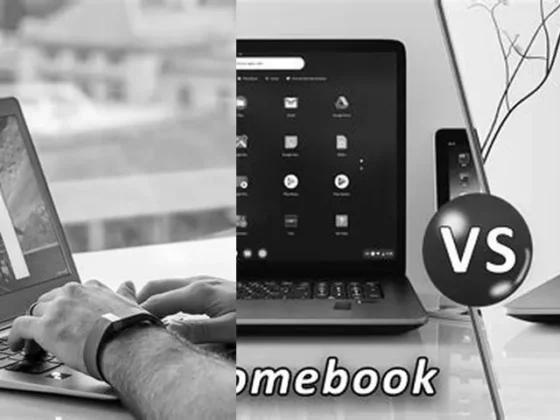How to Change the File Type on My Chromebook: A Comprehensive Guide: Are you tired of struggling with file types on your Chromebook? Wondering how to change them to suit your needs? Look no further! In this blog post, we will dive deep into the world of file types and extensions on Chromebook, and show you exactly how to change them effortlessly. Whether you’re a tech-savvy student or a busy professional, this guide will equip you with the knowledge you need to conquer any file type challenge. So, grab your Chromebook and get ready to unlock a whole new level of file management. Let’s dive in!
Understanding File Types and Extensions on Chromebook
Chromebooks have revolutionized the way we interact with computers, providing a streamlined, web-centric experience. However, managing files and understanding file types can sometimes be perplexing. If you’ve ever stumbled upon the question, “How do I change the file type on my Chromebook?” you’re not alone. Let’s dive into the basics to make this process crystal clear.
Identifying the File Type
Before you change a file’s type, it’s crucial to understand what a file type is. A file type, often determined by the file extension, indicates how the data within the file is formatted and what program should open it. On a Chromebook, you can usually see the file type to the left of the file name when you’re in the process of saving it.
Changing File Types on Chromebook
Using the Save As Feature
Changing the file type on a Chromebook is an uncomplicated task. When you’re ready to save a document, simply press Ctrl + s. This will open the save dialog box. Here, you can enter the desired name for your file. To the left of the file name, you have the option to change the file type. This will depend on the application you’re using and the file formats it supports.
Note: The list of available file types will vary depending on the software you are using. For instance, Google Docs allows you to save documents as .docx, .odt, .pdf, among others.
File System Support on Chrome OS
Understanding External Storage Compatibility
Chrome OS is versatile when it comes to supporting different file systems for external storage devices. It can work with NTFS, exFAT, and FAT32. This means you can plug in a variety of storage devices such as USB drives and SD cards and expect them to work seamlessly with your Chromebook.
Limitations with macOS File Systems
However, it’s important to note that Chrome OS can read but not write to the HFS+ file system, which is commonly used by macOS. This means that if you connect an HFS+ formatted drive, you’ll be able to access the files, but you won’t be able to modify them or add new files from your Chromebook.
Customizing Typing Experience on Chromebook
Changing Typing Style
Your Chromebook allows for a personalized typing experience by enabling different keyboard languages and inputs. To change the typing style on your Chromebook:
- At the bottom right, select the time.
- Select Settings.
- On the left panel, select Advanced.
- Under “Languages and inputs,” select Inputs.
Here you can add and enable different keyboard languages, which can change the layout and functionality of your keyboard, making it easier to type in other languages or with alternative keyboard styles.
Managing File Extensions and Types in Windows
Viewing and Changing File Extensions
While Chromebook users have a straightforward method to change file types, Windows users have the ability to view and modify file extensions directly. In Windows, open the File Explorer, click View on the menu ribbon, and check the box next to File name extensions. To change a file extension, right-click on the file, select Rename, update the extension after the period, and press the Enter key.
Caution When Changing Extensions
Be cautious when changing file extensions as altering them can render files unusable if the wrong extension is assigned. Always ensure that the extension you choose corresponds to the correct file type.
Accessing Files on a Chromebook
Navigating to Your Files
Getting to your files on a Chromebook is a breeze. Start by clicking on the Launcher, typically found at the bottom left corner of the screen, and then open the Files app. Here, you’ll find all your local files, downloads, and any connected external storage. The Files app on Chromebook also integrates with Google Drive, giving you easy access to your cloud-stored documents and media.
Organizing and Finding Files
Within the Files app, you can sort and search for your documents, making file management efficient and user-friendly. You can create folders, move files around, and delete items you no longer need.
Conclusion
Chromebooks may be simple and straightforward, but they still offer robust options for file management and customization. Whether you’re changing file types, tweaking your typing style, or managing your storage, Chrome OS provides a user-friendly interface that caters to a wide range of needs. With this knowledge, you can navigate your Chromebook like a pro, ensuring your workflow is as efficient and personalized as possible.
FAQ & Related Questions about Changing File Types on Chromebook
Q: How do I change the file type on my Chromebook?
A: To change the file type on a Chromebook, press Ctrl + s and enter a name for the file. You can also change the file type to the left of the file name.
Q: Can I edit files on Chromebook?
A: Yes, you can open and edit files stored on your computer using the Files app on your Chromebook. After setting up Microsoft 365, you can open and edit Powerpoint, Excel, or Word files.
Q: How do I view and change file extensions on Windows?
A: To view file extensions in Windows, open File Explorer, click View on the menu ribbon, and check the box next to File name extensions. To change a file extension, right-click the file, click Rename, and add or change the extension at the end of the file name.
Q: How do I access my files on Chromebook?
A: To access your files on Chromebook, select the Launcher in the corner of your screen, find and select Files. From there, you can open and manage your files.
Q: How do I change the typing style on my Chromebook?
A: To change the typing style on your Chromebook, select the time at the bottom right of the screen, then go to Settings. On the left panel, select Advanced, then under “Languages and inputs,” select Inputs. From there, you can set your keyboard languages.


